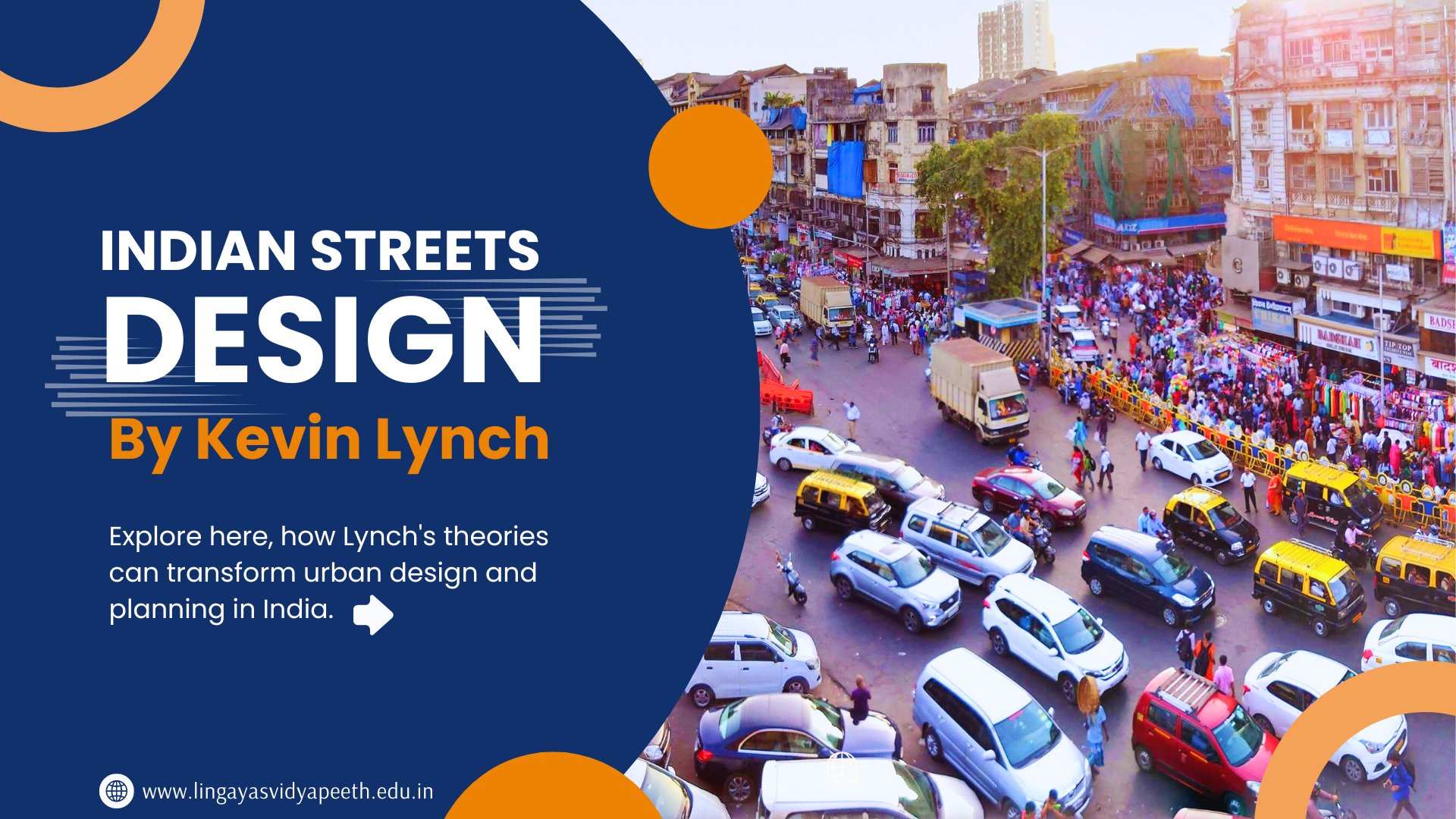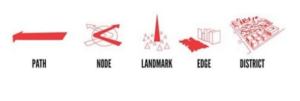Home » Redefining Indian Streets Through Kevin Lynch’s Lens

There is always more to be discovered about a scene or viewpoint than what the eye or ear can perceive. Everything is experienced in relation to its surroundings rather than in isolation.
You’ve received an invitation to a party at a location, but you don’t know the address. How are you going to respond? Once you enter the address in Google Maps, you can proceed. The phone’s current battery reliance is a problem. What do you do when your phone dies and you have a party to attend? Return home? or inquire around? In India, asking for an address is a pain. Did you ever inquire about the address? Either there are a lot of straights and left turns thrown at you, or you wind yourself asking at every intersection. The worst-case scenario is that you are lost geographically.
The Backbone of Every Architectural Design Solution
Anyone who has read Jane Jacobs or Kevin Lynch will be extremely familiar with the concept of a city, as well as how its residents see it. A person forms an impression of a city in his head based on recollections, prior experiences, and personal acquaintance with the area.
Different people see things differently from the same surroundings, which causes each observer to generate a very different impression. For instance, a room appears shorter if the top wall and ceiling are painted the same color, yet a room appears taller if the outer wall and ceiling are painted the same color.

A common person would identify all the significant landmarks on a city street in order to pinpoint the exact location of any object. These landmarks may be pathways, city edges, nodes, or other structures.
Lynch employs a variety of techniques in his experiment to ascertain the mental image that subjects have. One is to use a technique known as wayfinding, which involves asking them to find a specific neighbourhood using an address. Lynch breaks down the city’s picture into five main components for his wayfinding method: the street, edge, node, landmark, and district.
Transforming Cities Through Water Sensitive Planning
What if we were to rewrite Lynch’s list of city components in light of Indian Streets? Asking someone their address is a straightforward job that may get a range of responses. The primary cause of this is the heightened intricacy of Indian Streets.
As a result, how each city place is seen changes significantly. People navigate to various places by using their mental images of the cityscape. Lynch included significant tales about these locations—landmarks, nodes, streets, edges, etc.—to help the layperson understand the depiction.
From
Ar. Aditi Arora
HOD
School of Architecture and Planning
Lingaya’s Vidyapeeth
Top Architecture Colleges in Delhi NCR
Lingayas Vidyapeeth is the best college in Delhi NCR for architecture programs, offering B.Arch, B.Plan, and M.Plan degrees. At Lingayas Vidyapeeth, students can study various types of architecture, including street design, home and office architecture, malls, urban design, smart city water control, development in Himalayan areas, and waste management. This comprehensive curriculum prepares students for diverse and impactful careers in architecture.
June 13, 2024
RECENT POSTS
CATEGORIES
TAGS
Agriculture Agriculture future AI Architecture artificial intelligence Bachelor of Commerce BA English BA Psychology BTech AIML BTech CSE BTech cybersecurity BTech Engineering Business management career Career-Specific Education career guide career option career scope Civil engineering commerce and management Computer Science Computer science engineering Data science degree education Engineering Engineering students English Literature english program Fashion Design Fashion design course Higher Education Journalism journalism and mass communication law Law career Machine Learning mathematics MBA MBA specialization Mechanical Engineering Pharmacy Psychology Research and Development students
Nachauli, Jasana Road, Faridabad, Haryana
Address: C-72, Second Floor, Shivalik, Near Malviya Nagar,
Above HDFC Bank, New Delhi 110017
Landline No. - 011-46570515 / 45138169 / 41755703
Mobile No. - +91-7303152412 / +91-7303152420 / +91-9311321952
Toll Free: 1800-120-4613
Mobile : 8447744303 | 8447744304 | 8447744306 | 8447744309
8700003974 | 8700003411 | 8700003749
Copyrights © 1998 - 2025 Lingaya's Vidyapeeth (Deemed To Be University). All rights reserved.
LV only conducts physical/online verification of any document related to examination on the following email id:
It is important to note that the following email IDs and domains are fraudulent and do not belong to our university.